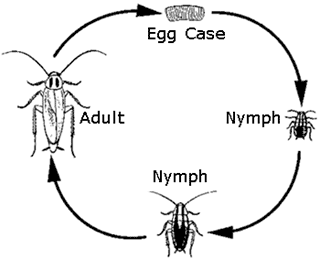Getting to the Bottom of Your Roach Problem with the Cockroach Lifecycle
The cockroach lifecycle may not be something that you want to think about, but when you consider it, it may just help you determine how much of a roach problem you are dealing with in your home. When you consider that seeing one roach in your home means that there are many more where you can't see them, the cockroach lifecycle suddenly becomes much more important. Also, when you think about how adaptable cockroaches are, you can't help be somewhat intrigued by how these bug form.The cockroach lifecycle actually has three developmental stages. These stages are known as the egg, the nymph, and the adult stages. The lifecycle starts in an egg that is put into a case with six to 40 eggs at a time. These cases are often hidden away for safe keeping. Some cockroaches choose to keep their eggs safe internally whilst others still carry the case around with them until the eggs are ready to hatch. The cockroach lifecycle gets a bit more exciting when the eggs hatch and the young cockroaches are very small and known as nymphs. The nymphs must go through several stages of molting, where their body will be quite soft and white. Each time the molting process is completed the cockroach will get bigger, change in color, and look more like an adult cockroach. The nymph stage of the cockroach lifecycle can take anywhere from a month and a half to several years, depending on the environment, the type of cockroach, and the prevalence of cockroach disease and parasites.
Knowing the lifecycle will help you identify how many generations of cockroaches you may be dealing with in your home or work place. Not only should you know the general cockroach lifecycle, you should also be aware of what type of cockroach you are dealing with since they are all a bit different. The differences between the species will help you target the type of cockroach you are dealing with at every point in the lifecycle, to make extermination much easier.

Cockroach Life Cycle
Nymphs hatch from egg cases that the adult female cockroach deposits. As the nymph grows, it sheds its "skin" or exoskeleton so it can get larger. Each nymphal stage is larger than the previous one, and an adult cockroach emerges after the last nymphal stage. The figure shows a simplified image of the life cycle (egg stage, nymph stage and adult stage) of the German cockroach.




A Nuclear War and Life of Cockroaches
ReplyDeleteYuck. Cockroaches are dirty, endless hunter which can be unaffected by using radiation. In a post-apocalypti international, it is going to be those grimy little critters that survive. We’d be better off without them.
Nice to meet you admin, it's really a informal review article and i like it.
ReplyDeleteby the aay here my new article about
best roach killer thanks